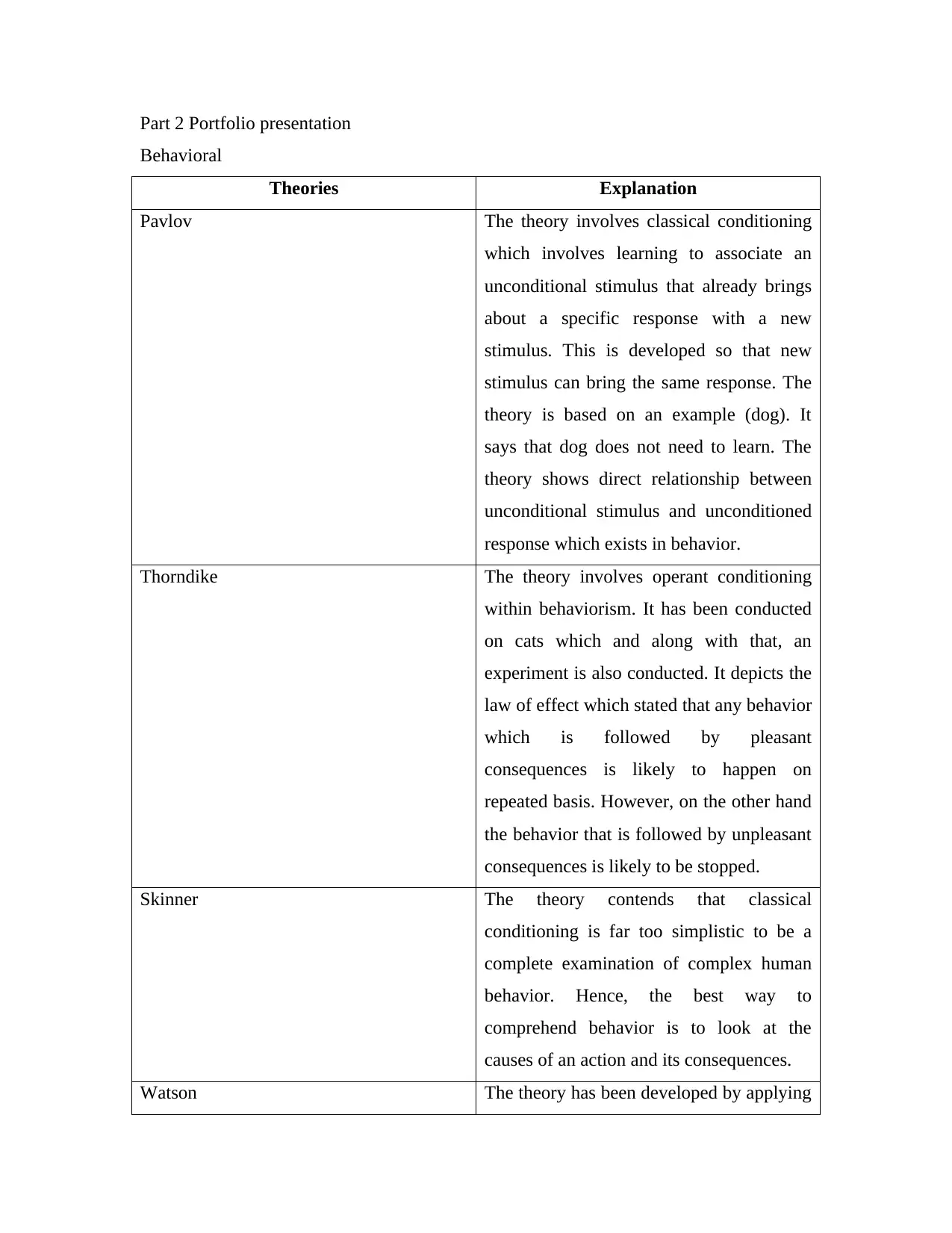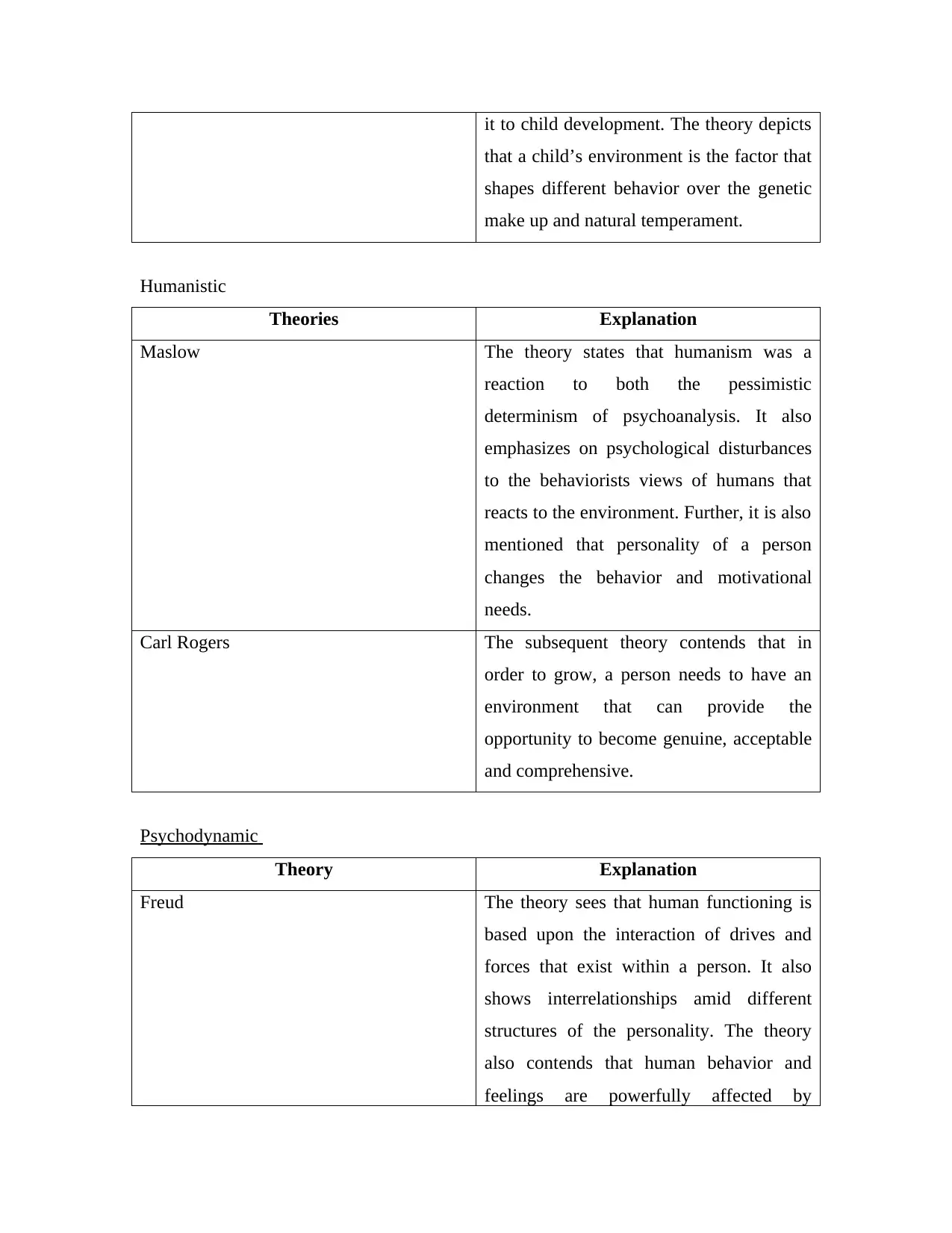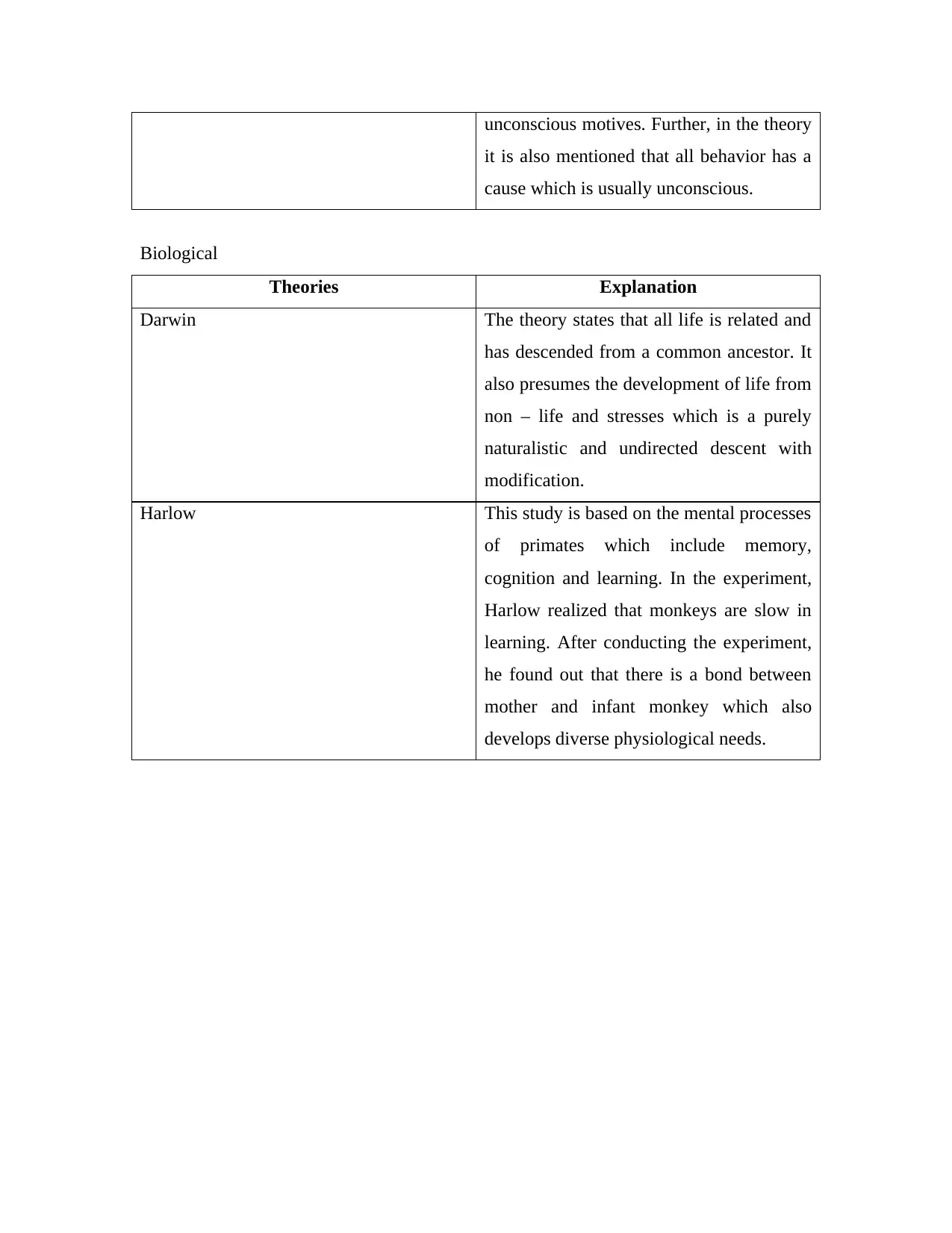Psychology Module: An Overview of Behavioral and Humanistic Theories
VerifiedAdded on 2020/01/07
|3
|652
|199
Presentation
AI Summary
This presentation provides an overview of several key behavioral theories in psychology. It begins by explaining classical conditioning (Pavlov), operant conditioning (Thorndike, Skinner), and the environmental influence on behavior (Watson). The presentation then moves on to humanistic theories, including Maslow and Carl Rogers, and their focus on personal growth and fulfillment. It also covers psychodynamic theory, with a focus on Freud's ideas about the unconscious mind, and biological theories, including Darwin and Harlow, and their impact on understanding behavior. The document is a presentation that provides explanations of each theory and the key concepts associated with them. The presentation is designed to help students understand different approaches to studying human behavior. This assignment is available on Desklib, a platform offering AI-powered study tools.
1 out of 3










![[object Object]](/_next/static/media/star-bottom.7253800d.svg)